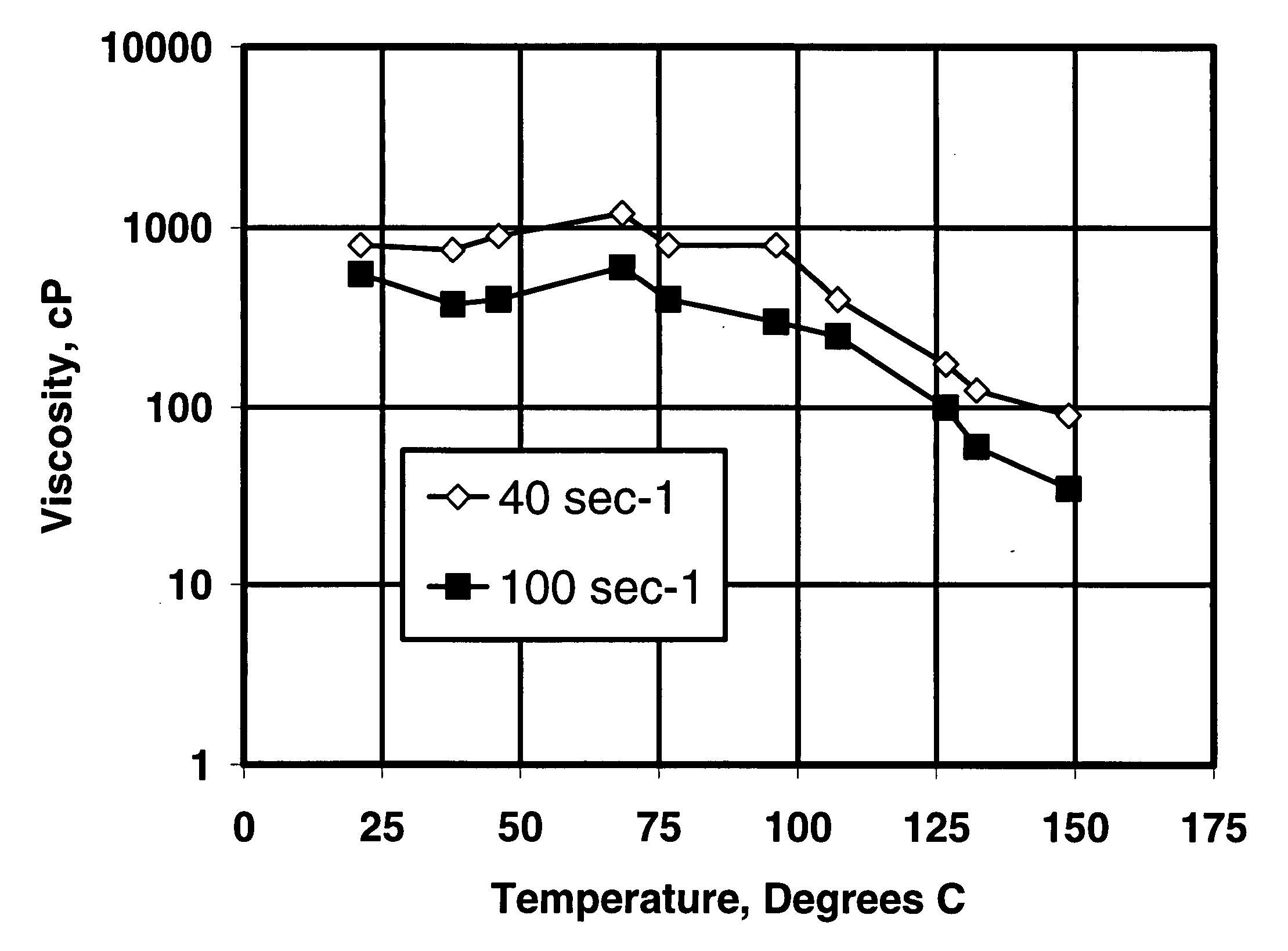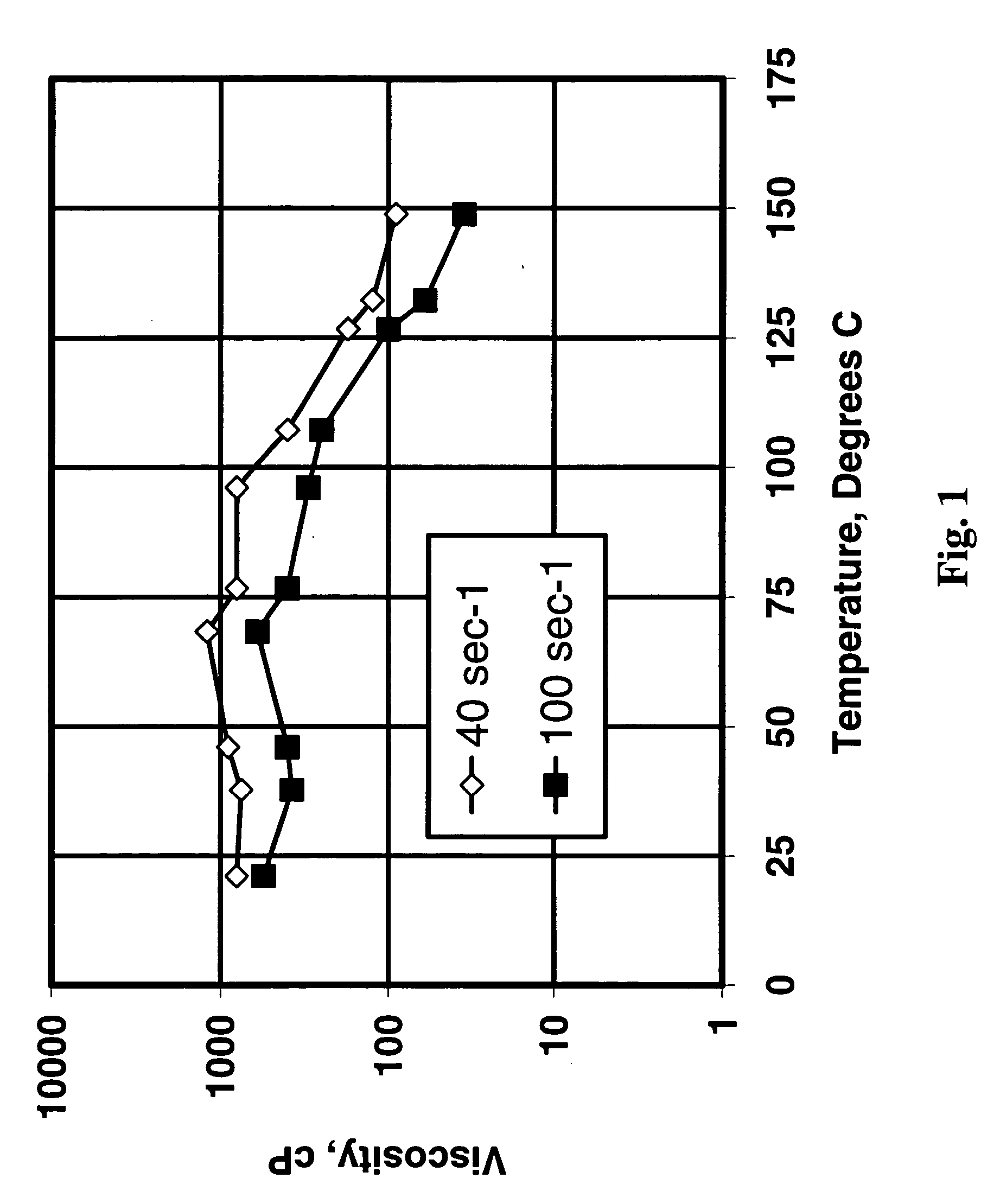Matrix acidizing high permeability contrast formations
a technology of contrast formation and matrix acidification, which is applied in the direction of fluid removal, chemistry apparatus and processes, and wellbore/well accessories, etc., can solve the problems of uneven stimulation of the entire interval, increased job cost, and reduced chance of forming a dominating wormhole or thief zon
- Summary
- Abstract
- Description
- Claims
- Application Information
AI Technical Summary
Benefits of technology
Problems solved by technology
Method used
Image
Examples
example 1
[0023] To describe the process, we use an example of a carbonate reservoir that has two distinct zones. The lower permeability zone, for example a 100 mD, 15 m (50 foot) interval, is located at the bottom of the well and a higher permeability zone, for example a 2000 mD, 15 m (50 foot) interval, is located 90 m (300 feet) above the lower permeability zone. The following is the generic job design for such an example (not including among other optional typical steps the usual pre-job procedures for example of wellbore preparation, cleaning, displacement, and logging; or the usual rigging up, testing and placing for example of appropriate perforating, testing, and control tools during the job; and the usual post-job procedures, for example, of displacement (for example with completion brine), rigging down, flow testing, shutting in if appropriate, logging, killing, pulling out and temporary abandonment if appropriate). An example of a completion fluid used with the invention is 7% KCl ...
example 2
[0038] Following is a more detailed example of steps 2 through 4 of the above generic job design for a single 84 m (275 foot) thick perforated carbonate interval. That is, in the method of the invention, comprising the sequential steps of TCP, acidizing with VDA, TCP, acidizing with VDA, etc., this is an example of the procedure that is used between two perforating steps. Assume that the displacement volume is about 12,250 L (about 77 bbl); the well is deviated about 50°; the temperature is about 68° C. (about 155° F.); the pressure is about 21.8 MPa (about 3160 psi); the well will produce both oil and gas; the permeability of the zone is about 100 mD; the formation is about 80% carbonate and 20% sand; the well is expected to produce H2S; and the damage is caused by bentonite estimated to have penetrated about 6 inches into the formation.
[0039] The fluids that are used are, for example:
[0040] Preflush: 2% KCl and 10% ethylene glycol monobutyl ether in water with H2S scavenger.
[00...
example 3
[0046] A treatment is performed in a carbonate formation at a depth of about 2700 m in a formation having a net pay (thickness) of about 140 m and a temperature of about 66° C. (about 150° F.). The permeabilities of this single formation range from about 100 mD to about 1000 mD. There is H2S present.
[0047] As explained in Example 1, not all the usual steps, that would be known by one skilled in designing and conducting acidizing treatments, are included in this description. The formation is acidized in two steps. The lower 85 m (first zone) is perforated by Tubing Conveyed Perforation, using production tubing; that zone is then treated with an alternating sequence of HCl and VDA. The tubing is then moved up and the upper 55 m (second zone) is perforated; that zone is then treated with VDA.
The fluids used are:
[0048] Perforating Acid: 10% Acetic acid with corrosion inhibitor, iron control agent, and non-emulsifying agent, weighted with KCl to a density of 1.09 kg / L (9.1 lbs / 1 gal....
PUM
| Property | Measurement | Unit |
|---|---|---|
| Efficiency | aaaaa | aaaaa |
| Permeability | aaaaa | aaaaa |
| Viscoelasticity | aaaaa | aaaaa |
Abstract
Description
Claims
Application Information
 Login to View More
Login to View More - R&D
- Intellectual Property
- Life Sciences
- Materials
- Tech Scout
- Unparalleled Data Quality
- Higher Quality Content
- 60% Fewer Hallucinations
Browse by: Latest US Patents, China's latest patents, Technical Efficacy Thesaurus, Application Domain, Technology Topic, Popular Technical Reports.
© 2025 PatSnap. All rights reserved.Legal|Privacy policy|Modern Slavery Act Transparency Statement|Sitemap|About US| Contact US: help@patsnap.com


